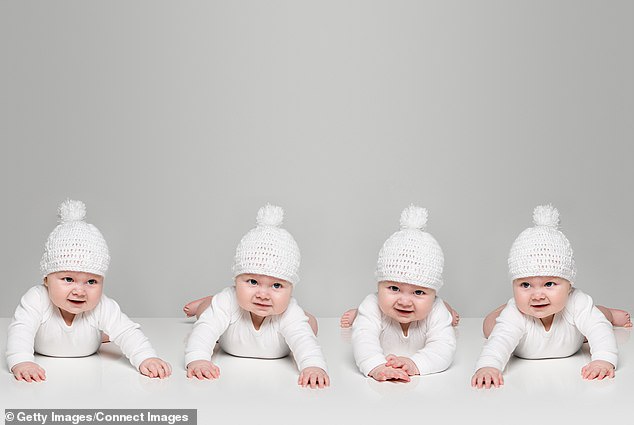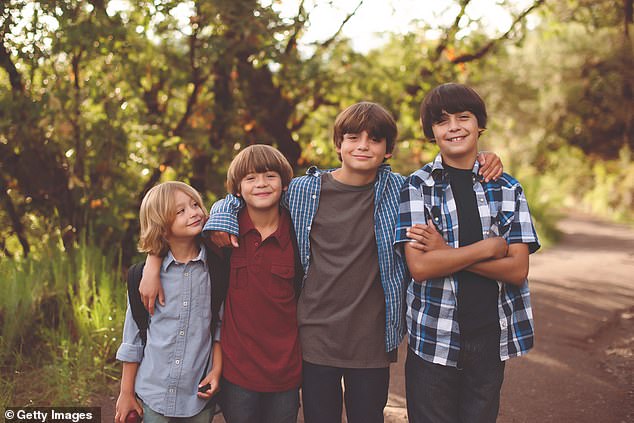A Harvard study has revealed a link between a woman’s age and the likelihood of giving birth to multiple children of the same sex.
Siwen Wang, a PhD student in nutritional epidemiology at the Harvard T.H. Chan School of Public Health, began researching the topic after noticing a trend in her own family. Her mother was one of three sisters and a younger brother, while her father had two brothers and no sisters.
‘I was wondering whether it’s just pure chance or if there was some special biology underlying this phenomenon,’ she told the Boston Globe.
Her questions led to a study published July 18 in Science Advances by her and seven others.
The researchers analyzed 146,064 pregnancies from 58,000 US nurses across nearly six decades and discovered that in some families the odds are not so random.
The NIH-funded Nurses’ Health Study studied the subjects between 1956 and 2015 and found that some families were more likely to have children of the same sex.
Researchers found that maternal age played a key role in the sex of the baby.

A Harvard study has revealed a link between a woman’s age and the likelihood of giving birth to children of the same sex

Siwen Wang (pictured), a PhD student at the Harvard T.H. Chan School of Public Health, began researching the topic after noticing a trend in her own family. Her mother was one of three sisters and a younger brother, while her father had two brothers and no sisters
The research found that women who had their first child at age 29 or older were significantly more likely to have multiple children of the same sex.
‘It’s like moving the needle from 50 to 60 percent,’ Dr. Bernard Rosner, a co-author of the study told the outlet.
‘I don’t think you could use any of this information to definitively predict whether a specific person will have a male or female offspring, but … it’s not necessarily random probability.’
The findings also showed that women who already had three children of the same sex were more likely to have a fourth of the same gender.
The study showed a 61 percent likelihood for boys and 58 percent for girls.
‘If you’ve had two girls or three girls and you’re trying for a boy, you should know your odds are not 50-50,’ Jorge Chavarro, professor of nutrition and epidemiology and author of the study, told the Washington Post.

The research found that women who had their first child at age 29 or older were significantly more likely to have multiple children of the same sex
‘You’re more likely than not to have another girl.’
‘We don’t know why these genes would be associated with sex at birth, but they are, and that opens up new questions,’ Chavarro added.
Paternal influences on the child’s sex were not entirely explored in the study.
Researchers did not include detailed data on fathers so they couldn’t analyze how paternal factors might influence the sex of children.
Despite, the lack of research on the paternal side, Wang did mention that older maternal age is most highly correlated with older paternal age.











